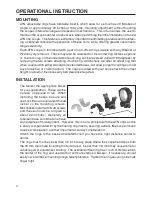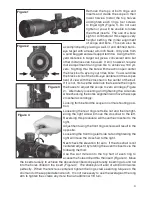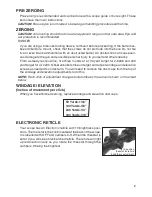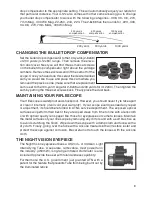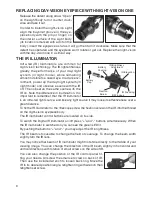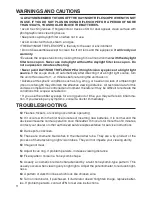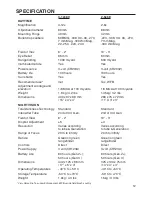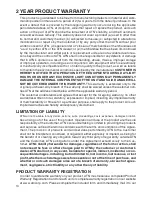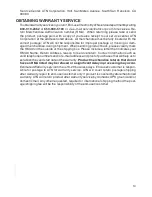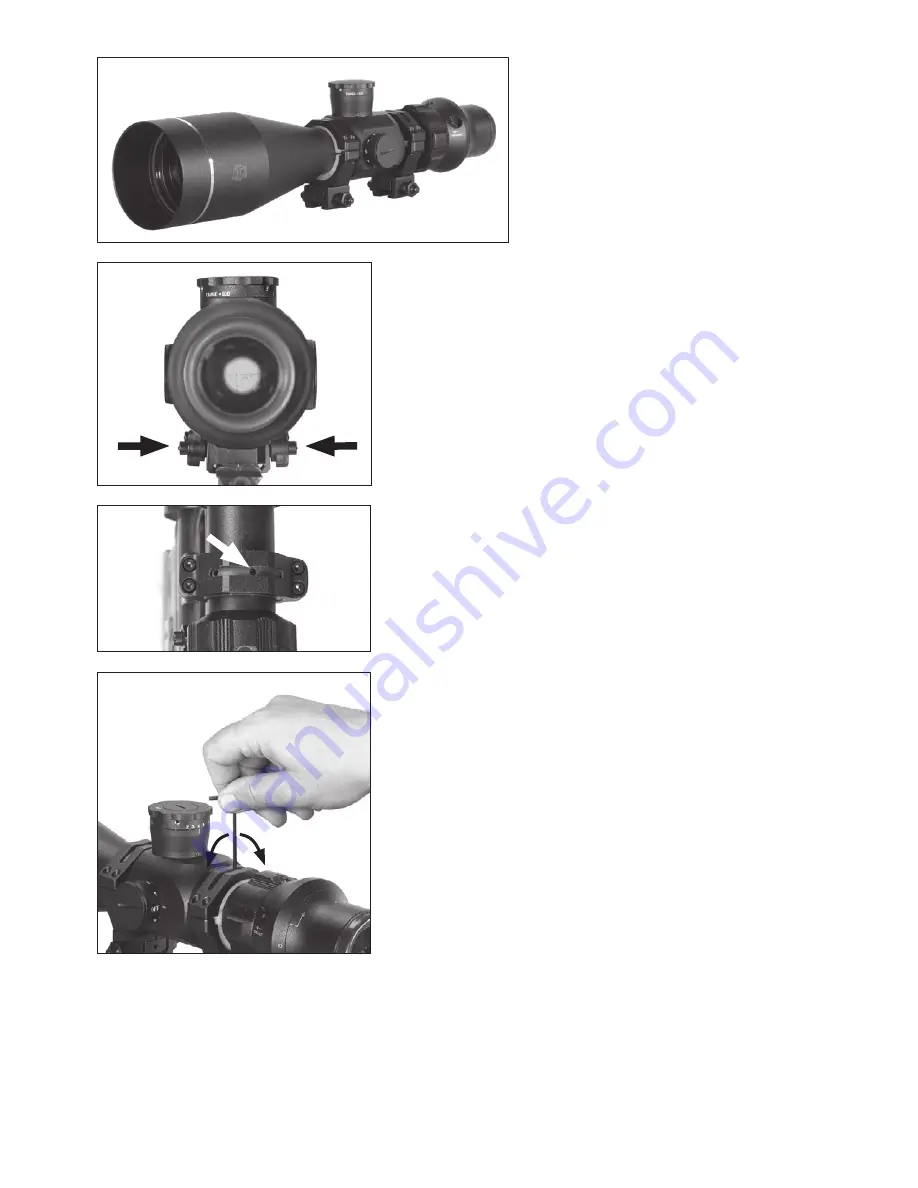
4
Remove the tops of both rings and
inserts and cradle the scope in their
lower halves. Install the top halves
and tighten each ring’s four screws
to finger tight (Figure 1). Do not over
tighten or you will be unable to rotate
the offset inserts. The use of a bore
sight or collimator at this stage is very
helpful setting the initial alignment
of scope and bore. This can also be
accomplished by placing a well-lit and defined bull’s-
eye target with at least a 6-inch black, 100 yards from
a sand bagged and well supported rifle. Using the 100-
yard distance to target will give a convenient zero but
other distances can be used. It will, however, require
more adjustment during live fire to achieve a 100 yd.
zero. Sighting thru the bore with the action open center
the black bull’s-eye in your rifles bore. You would like
the black circle of the bull’s-eye centered in the scopes
field of view with the crosshair in the center of the bull.
If it is not, first use the side nuts that secure the rings to
the bases to adjust the scope to zero windage (Figure
2). Alternately loosening and tightening the side nuts
while checking the bores alignment will move the scope
crosshair accordingly:
Looking from behind the scope in normal shooting posi-
tion.
Loosening the rear rings left side nut and then retight-
ening the right side will move the crosshair to the left.
Reversing this procedure will move the crosshair to the
right.
Adjustment using the front rings screws will result in the
opposite.
Loosening the front rings left side nut and tightening the
right will move the crosshair to the right.
Next check the elevation for zero. If the crosshair is not
centered adjust it by rotating the a centric inserts via the
following method:
Use the slot milled into the top half of each ring to
access the holes drilled thru the insert (Figure 3). Move
the inserts radially to achieve the above described scope picture by inserting a round rod
into the holes drilled in the insert (Figure 4). The shank (blunt end) of a 9/64 drill works
perfectly. When the reticle is centered, tighten the ring screws exerting torque on the
short end of the supplied allen wrench. It is not necessary to use the leverage of the long
arm to tighten the screws any more than an additional 1/8 turn.
Figure 2
Figure 1
Figure 4
Figure 3




